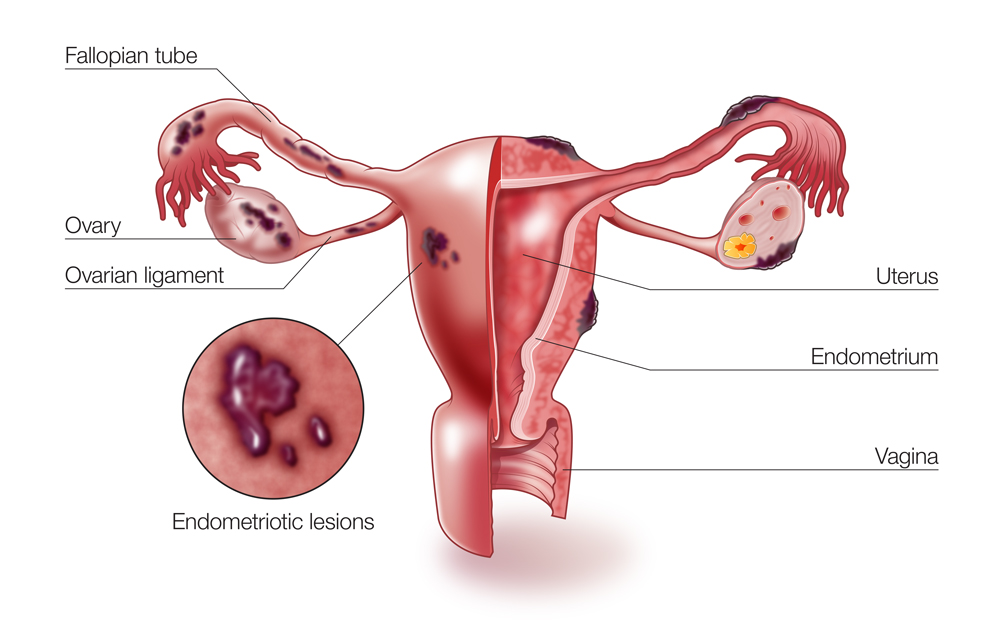Endometriosis is a common condition in women. It’s chronic, painful, and often gets steadily worse.Normally, the tissue that lines a woman’s uterus, known as the endometrium, is found only in the uterus. But when a woman develops endometriosis, microscopic bits of this tissue escape from the uterus and grow on other organs such as the ovaries, the outer wall of the uterus, the fallopian tubes, the ligaments that support the uterus, the space between the uterus and the rectum, and the space between the uterus and the bladder. In rare cases, they can spread outside the abdomenand grow on other organs, such as the lungs.
Just like the endometrium, the escaped tissue responds to the hormones estrogen and progesterone by thickening, and it may bleed every month. But because the escaped tissue is growing in other tissues, the blood it make

Symptoms
Other medical conditions such as pelvic inflammatory disease (PID), ovarian cysts, and irritable bowel syndrome (IBS) can mimic the symptoms of endometriosis.
Symptoms of endometriosis include:
- Severe menstrual cramps, unrelieved with NSAIDS
- Long-term lower-back and pelvic pain
- Periods lasting longer than 7 days
- Heavy menstrual bleeding where the pad or tampon needs changing every 1 to 2 hours
- Bowel and urinary problems including pain, diarrhea, constipation, and bloating
- Bloody stool or urine
- Nausea and vomiting
- Fatigue
- Pain during intercourse
- Spotting or bleeding between periods
Pain is the most common indication of endometriosis, but the severity of the pain does not always correlate with the extent of the disease.
Pain often resolves following menopause, when the body stops producing estrogen production. However, if hormone therapy is used during menopause, symptoms may persist.
Pregnancy may provide temporary relief from symptoms.
Treatment
Surgery is possible, but it is normally considered only if other treatments are not effective.
Pain medications: Either over-the-counter (OTC) nonsteroidal anti-inflammatory drugs (NSAIDs) such as ibuprofen (Advil, Motrin IB, others) or prescription drugs for the treatment of painful menses.
Hormones: Treatment may be with hormonal therapies such as hormonal birth control, Gonadotropin-releasing hormone (Gn-RH) agonists and antagonists, Medroxyprogesterone (Depo-Provera) or Danazol. Placement of an intrauterine device (IUD) may also be recommended.
Causes
The exact cause of endometriosis is not currently fully understood.
